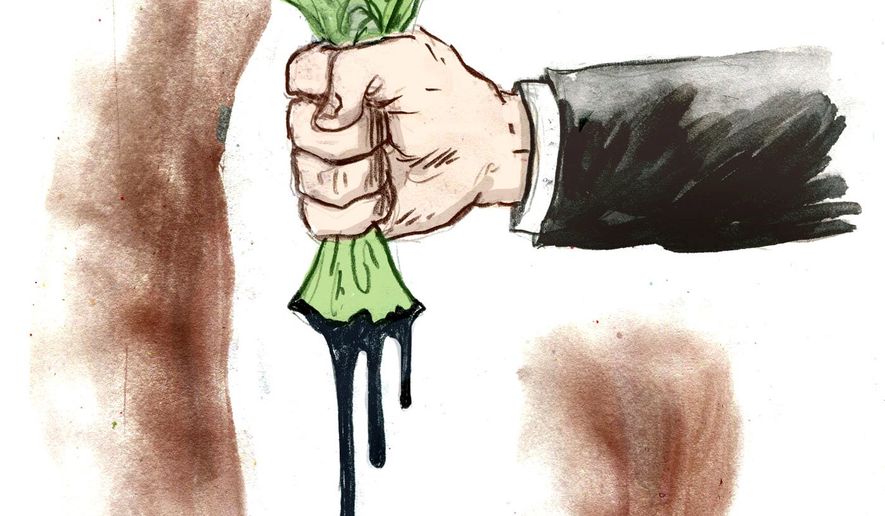OPINION:
Not many years ago, the idea of “peak oil” was all the rage. The concept, first identified in 1956 by M. King Hubbert, a geologist working for Shell Oil, held that there was a finite amount of oil in the ground and that oil production would peak in the 1970s and then decline. Eventually, oil prices would rise astronomically. The answer to the problem of peak oil was to invest in alternative-energy sources.
Oil production did appear to peak in the 1970s just as the “energy crisis” hit the United States. It re-emerged in the early part of this century when flat production rates seemed to augur an endless future of high oil prices. Then a funny thing happened. Oil production soared, rising from about 5 million barrels a day in 2008, when U.S. production was at the lowest level since 1943, to 8.3 million barrels a day in the first part of 2014.
What advocates of peak oil had ignored is the dual role of price and technology in the production of oil. The physical supply of oil is not the limiting factor. There is more oil available at $90 a barrel than there is at $25 a barrel. Higher prices stimulate innovation, which in the case of oil was the application of fracturing (fracking) and horizontal drilling, which has squeezed crude out of previously inaccessible places. With the United States poised to become the largest producer of oil in the world, global oil prices have begun to fall, much to the dismay of Russia, Iran and Saudi Arabia.
The time has come to leverage this development by repealing the outdated laws dating from the Arab oil embargo of the 1970s: the requirement for U.S. producers to refine American crude oil before exporting it. The concern, of course, has been that if American companies could export crude oil, it would raise the domestic price of oil and, therefore, the price of refined products as well.
However, sound economic analysis suggest that lifting the ban on exporting crude oil would actually help to lower the domestic price of refined products by creating a more efficient system for distributing and refining oil. A study prepared for the American Petroleum Institute projects that lifting the ban on the export of crude oil will save U.S. consumers nearly $6 billion over the next 20 years, as well as increasing U.S. gross domestic product by $38 billion and adding some 300,000 jobs by 2020. Other studies project an even higher number of jobs.
Lifting the ban on U.S. crude-oil exports will also intensify the change in the geopolitical landscape created by fracking and horizontal drilling by making it more difficult, if not impossible, for one country to manipulate regional energy supplies, as Russia has been doing in Eastern and Central Europe. Russia has already felt the impact of lower prices resulting from such technological innovations. Distributing U.S. crude oil on the global market would increase the supply of oil, which is likely to reduce the price of oil and refined products to the benefit of the countries of Eastern and Central Europe at the expense of Russia. Lifting restrictions on the export of U.S. crude oil will help prevent future attempts by Russia to manipulate energy for political and economic purposes, and limit global price shocks as well.
To its credit, the Obama administration has permitted limited crude-oil exports, but for the most part, the restrictions remain in place. Even were the president so inclined to take steps to ease restrictions on crude-oil exports in the name of U.S. national interests — something that his actions on the Keystone XL pipeline make unlikely — the ball is in Congress’ court. Legislation lifting the antiquated restrictions on exporting crude oil is clearly in the national interest for not only economic reasons, but also national security reasons.
Mackubin Owens is editor of Orbis and a recently retired professor of national security affairs at the National War College.




Please read our comment policy before commenting.